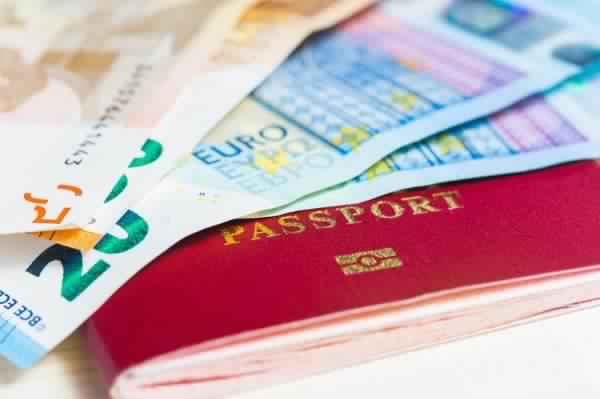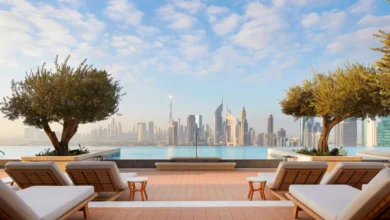Former imperial city and ancient capital of the Moroccan kingdom, “The Red City” is comprised of both a modern city and an adjacent ancient fortified area. This old section of the third largest Moroccan city after Casablanca and Rabat is crisscrossed with intertwined narrow passageways, and within lies the most impressive monuments of Marrakech’s historical and architectural heritage.
To properly appreciate this historical wonderland, I discovered that nothing is more exciting than entering it through one of the 22 doors that pierce the 19 kilometres long lime-covered ramparts. Originally, those doors were built to protect against invasions, but later were designed to meet the aesthetic needs of the bourgeoning city of the medina. I decided to enter this parallel world through Bab Sidi Ghrib, a modest looking door situated on the west side of the medina, which connects, through a paved street, the elegant neighbourhood of l’Hivernage to the famous Koutoubia that reveals itself through the clearing morning fog.
Although Sidi Ghrib is not architecturally impressive, nor one of the famous "abouab" of the medina, yet it is the closest door to the spectacular if Spartan minaret of the Koutoubia. When I approached the forecourt of the Mosque it was 8 in the morning, and the only people in sight were rolled up in thin blankets and spread on mats, waiting for warmer sunlight to wake them up. The Koutoubia Mosque, composed solely of a 69 meter-tall square minaret jutting out of bare rock, is the landmark of Marrakech. It dates back to 1120 and was launched under the Berber dynasty of the Amoravids.
In 1162, the building underwent important changes under the Almohad prince Abu Yusuf Yaqub al-Mansur and became one of the most characteristic buildings of the Almohad style. This dynasty, which adhered to the Maliki rite, preferred austere architecture that matched its own ascetic bent. Yet, the sobriety of its construction is belied by three gilded copper spheres that crown its apex, which respectively represent the earthly, the celestial and the spiritual worlds. It’s proximity to the Jamaa el Fna square, which bustles with story-tellers, orange juice sellers, snake charmers, chained monkeys, teeth-pullers, acrobats and musicians, also helps lighten the ambiance around this religious edifice.
As I was walking down the few hundred meter-long paved way that connects the two spots, I was constantly offered a ride by enterprising carriage-drivers with an unoriginal “la gazelle, calèche?". In spite of all those tempting proposals I elegantly declined them when I noticed how worn-out and depressed the horses looked despite the bright plastic flowers pinned on their heads. Trotting on the burning tarmac all day long, they are constantly surrounded by careless taxi drivers and uncontrollable scooters, which fill their nostrils with exhaust fumes. I smiled at the sight of an ingenuous device which consists of a plastic sheet strapped under the horse’s tail and collects the horse dung, consequently preventing delicate tourist feet from being soiled. And tourist feet are legion in this spot of the medina, which leads to the biggest souk in Morocco.
Beware of the henna-tattooists who inevitably give chase to any female tourist that crosses their path, their syringes filled with the thick green substance. One of them surprised me, grabbed my hand and produced a shapeless scorpion on the back of my hand, not acknowledging my potent hatred for the latter. One might also be gently strangled by a venom-deprived snake, or given an undesired embrace by a mangy tick-ridden macaque. But these fates are not preordained, and even unlucky tourists usually escape unscathed. From iftar time until late in the night all the animals desert the square, replaced by hundreds of food stalls offering steaming kefta balls, yummy skewers and various kinds of salads for very attractive prices.
All those stalls are numbered and I would recommend without hesitation the number 22, which somehow produces the best "boulfaf" in Marrakech, a grilled specialty of liver wrapped in strips of caul. The square is bordered on one side by the souk, which can be entered through two main doors, but most use the door on the right. Small stalls filled with local handcrafts are lined up on both sides of the winding alleys of the souk, protected from the sun by a rooftop consisting of iron plates. Veritable mountains of olives, verbena packets, colourful spices cones, funky babouches, bootleg leather, ostrich eggs and henna powder infuse the area with countless scents which somehow blend curiously well.
This shopping maze is not totally devoid of cultural points of interest, however. On the north side of the medina the fascinating Madrassa Al-Youssef can be visited. Even though the entrance fee is rather costly (50 dirhams-EGP 35) compared to other monuments, it is well worth the price. This Islamic college was founded in the 14th century by the Marinid sultan Abu Al-Hassan and was affiliated with the neighbouring Ben Youssef Mosque. The madrassa was at the time one of the largest theological colleges in North Africa and housed up to 900 students in 130 dormitory rooms, which were clustered around a courtyard richly carved in marble, cedar and stucco. The building, which is almost entirely covered in geometrical inscriptions, was completely refurbished in 1960 and reopened to the public as an historical site in 1982.
I can think of nothing more interesting to do then than going to the Bahia Palace, even though the whole souk has to be crossed again, heading south. I retraced my steps and found without much effort my way back to Jamaa el Fna square, and then walked further, still heading south. The ever-present packs of tourists helped me locate the palace, well hidden in the medina’s curving alleys. Built in the late 19th century by the Grand Vizier Ahmed Ben Moussa, the Bahia palace is an architectural masterpiece which contains numerous patios and 8000 square meters of gardens. The most impressive courtyard is as vast (50m x 30m) as it is aesthetically striking, paved with marble and mosaics and surrounded by a series of carved wooden columns.
I realized with a hint of nostalgia that everything in the courtyard was in various states of decay: shreds of lime were cracking, the two fountains had lost significant portions of their stonework and the pool had been dry for years. But these deficiencies somehow add to the overall charm of the palace. Exploring its myriad chambers, I was struck by the delicately painted cedar ceilings, the subtle ornamentations and the finely perforated plaster panels. But again, on the subject of decaying beauty, no palace is a finer example of the phenomenon than the Badi Palace, which is to be found a few hundred meters west of the Bahia Palace. Of the 16th century palace only remains a vast esplanade dug with gardens, planted with orange trees and surrounded by high partially crumbling walls.
The Saadian sultan Ahmed Al-Mansour Dahbi ordered the erection of this sumptuous 360 room-palace, its design influenced by the Alhambra in Granada, to celebrate a victory over the Portuguese army in 1578. Construction of the palace was finished in 1603, with only the richest of materials being used to decorate the princely complex. Unfortunately it was looted in 1696, when the Alawite Sultan Moulay Ismail built the imperial city of Meknes. Today, the most faithful guests of this palace in all its lost splendour are storks, which build their huge nests on top of its decaying walls. Their smoky eyes observe with interest the rare visitor, occasionally unfolding their wide wings when disturbed.
Exploring the dimly-lit underground galleries at the rear of the palace gave the intrepid tourist I became a feeling of adventure, as I followed the narrow passageways that led to other destroyed parts of the palace. I eventually decided that it was time for me to step out discreetly, and to leave the medina through the closest door available, Bab Agnaou. This horseshoe-shaped gate framed by inscriptions from the Qur’an dates back to the 12th century, during the Almohad dynasty. The origin of the gate’s name has not been confirmed, and historians hesitate between “the Guinean” and “the mute and hornless ram”, relating to the day when the gate lost its two towers. Of course, many other monuments are worth discovering within the adobe walls of ancient Marrakech, not to mention those intangible smells and tastes that truly make “The Red City” a unique destination.
.




